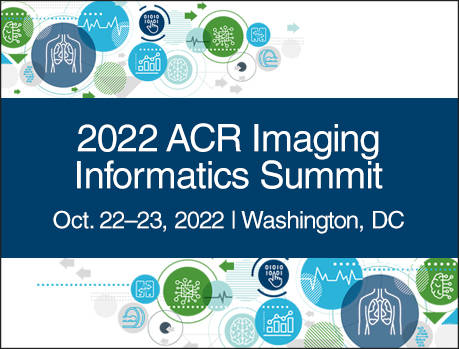9 Pillars of Clinical AI: Lessons Learned While Building an AI-Enabled Enterprise Radiology Department

Despite broad interest in researching how AI applications may be of use in radiology, clinical implementation and seamless workflow integration remain elusive to most practices.
In the last few years, the Enterprise Radiology Department at Mayo Clinic in Rochester has begun to build the mechanisms required to enable an AI-enabled radiology practice. This effort aims to leverage the research taking place within our institution that has yielded promising results.
At the core of the effort are nine “Pillars of Clinical AI” that emerged during the process of planning and implementing our AI strategy. Following these nine pillars can enable institutions to translate AI research into clinical practice — and begin seeing AI’s benefits.
Pillar 1: Governance
Critical to successful AI implementation is a governance structure that is responsible for maintaining the vision of the department, prioritizing projects, and maximizing practice impact. AI governance must balance many factors — ensuring clinical needs will be met when selecting algorithms, resources will be well-managed, and collaboration will be fostered between clinicians and other staff.
To address this task, our department established a committee charged with reviewing proposals and weighing the impact proposed applications may have on patient care and current clinical workflows. Based on the priority given to a proposal, the committee assigns appropriate resources to begin implementing the solution.
Pillar 2: Discovery
The discovery process generates and evaluates new opportunities where AI may be useful. While the discovery process is based on the freedom to explore options, coordination with the governance and translation pillars will maximize an AI solution’s impact on the practice.
By making our researchers aware of downstream implications of their designs and decisions, we can smooth the transition of bringing new algorithms into the practice — and ensure that algorithms address clinically relevant questions. To achieve fast prototyping, a discovery team —including image analysts, post-doctoral fellows, data scientists, AI engineers, project managers, and scientific programmers — collaborates closely with radiologists and clinicians. All work is performed under a quality management system (QMS) maintained by a quality specialist.
Pillar 3: Translation
Translation is the process of preparing a research prototype for the rigors of clinical practice. It is imperative to consider security, regulation, data provenance, privacy, maintenance, and support during this process. Additional extensive clinical validation is necessary for each algorithm and for the clinical workflow to ensure the algorithm can be generalized. We also establish standard operating procedures to ensure application of machine learning best practices.
Pillar 4: Regulatory Process
Regulation of AI by the Food and Drug Administration (FDA) is still evolving. Online learning systems are a chief concern, as algorithms continue to change and learn once deployed. In our process, we always conduct the translation of algorithms under a rigorous QMS to ensure that an FDA clearance path is feasible. The radiology department works with the QMS specialist and the compliance office to develop a strategy that will support the application for FDA clearance.
Pillar 5: Application
Bringing an AI algorithm into clinical practice requires good processes to ensure a smooth seamless rollout and integration with other available clinical systems. To address the challenge, a team of IT specialists and informatics experts must develop a high-availability infrastructure that can be used to roll out the algorithms into clinical practice when ready. Rollout stages include integration, testing, and production infrastructure. Additionally, it is critical to put appropriate software in place to allow for data routing and monitoring.
Pillar 6: Sustainability
Radiology is a dynamic field, with a rapid cadence of new imaging modalities, clinical best practices, workflow changes, and optimization. Radiologists, informatics experts, and AI researchers must jointly update models with fresh training data, deploy new versions, and adapt and control deployed algorithms. Ongoing coordination with governance is also critical to ensure sustainable staffing levels and resources over time.
Pillar 7: Financial Considerations
Internal funding, the potential for commercialization, and billing processes are major financial concerns when creating an AI-enabled radiology practice. The long-term return on investment and billing for AI that is incorporated into a workflow remain open questions for early AI adopters. Institution-level leaders with appropriate expertise address this task for us.
Pillar 8: Patient and Provider Experience
In the radiology workflow, even the best AI algorithm will be rejected if poorly implemented and deployed. To ensure smooth clinical integration, a systems engineer needs to identify the best way to integrate each project within the clinical practice. The needs of the patient must also be considered, including answering questions such as, “How will patients react when AI is used to predict a clinical outcome?” and “What will it take to teach clinicians how to work with an algorithm?”
In our AI implementation, the needs of the patient and clinicians/radiologists are always top of mind.
Pillar 9: Digital Practice Alignment
No clinical department operates in a vacuum within a large institution. Our radiology AI strategy interfaces with and informs institutional initiatives to create a digital practice that extends beyond the radiology department to intersect multiple specialties.
Make Your AI Journey a Success
While every AI journey is unique, institutions face many of the same challenges in translating AI research into clinical practice. These nine pillars of clinical AI have helped us create a successful AI-enabled radiology practice. We hope this approach will help other institutions build their own AI-enabled success stories.
Panagiotis Korfiatis, PhD | Assistant Professor, Mayo Clinic | Rochester, MN
Daniel Blezek, PhD | Assistant Professor, Mayo Clinic | Rochester, MN
Sadia Choudhery, MD | Assistant Professor, Mayo Clinic | Rochester, MN
9 Pillars of Clinical AI: Lessons Learned While Building an AI-Enabled Enterprise Radiology Department
-

You may also like
Solving Today's Informatics Problems, Building Tomorrow's SolutionsSeptember 23, 2022 | Ashley Prosper, MDAs radiologists, we strive to deliver high-quality images for interpretation while maintaining patient safety, and to deliver accurate, concise reports that will inform patient care. We have improved image quality with advances in technology and attention to optimizing protocols. We have made a stronger commitment to patient safety, comfort, and satisfaction with research, communication, and education about contrast and radiation issues. But when it comes to radiology reports, little has changed over the past century.